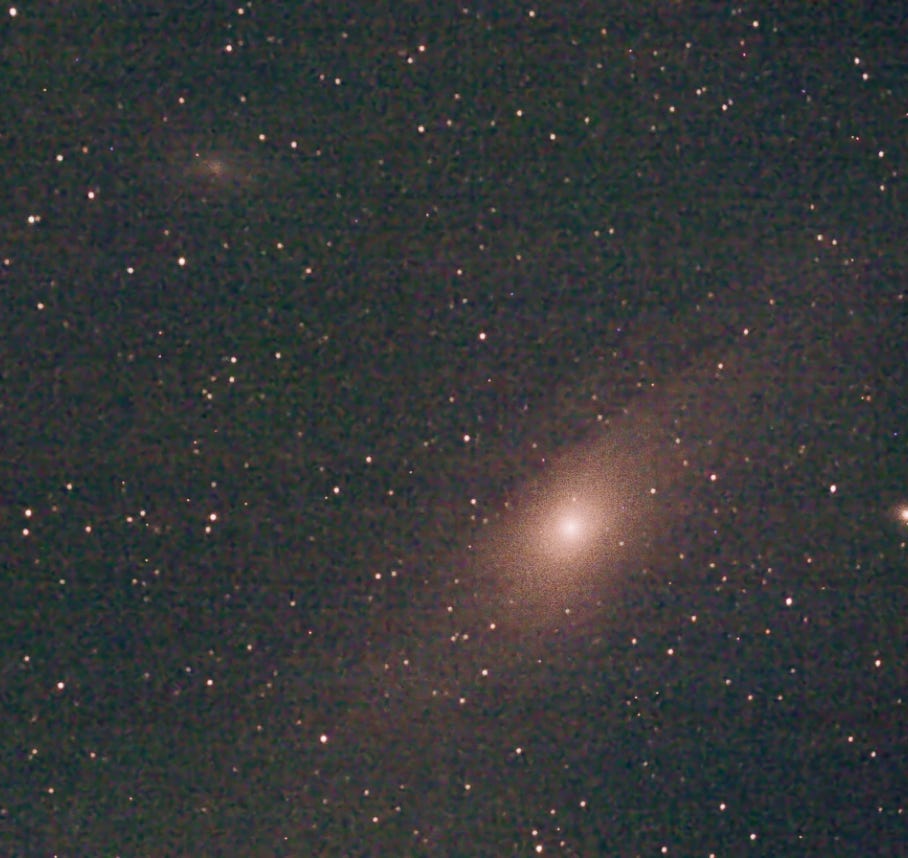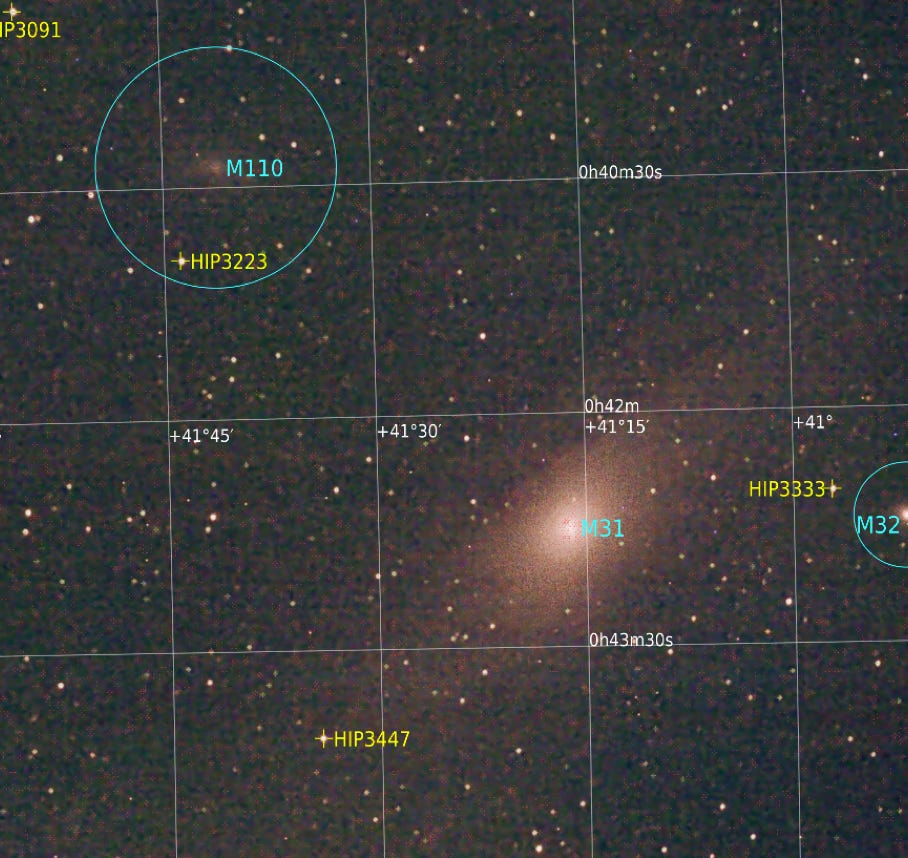M 31
The Andromeda galaxy M31 is the nearest galaxy with a distance of about 2.5 Mill. light-years. M31 and our Milky Way galaxy are the biggest members of the Local Group of galaxies (including also the Large Magellanic Cloud). M31 can be seen by naked eye in constellation Andromeda. The diameter of M31 is about 200.000 light-years, about twice as large compared to the Milky Way. At its centre resides a Black Hole of about 100 Million solar masses.
On 18 September 2018 I tried, for the first time, to image the M31 region, using the 110 mm William Optics FLT APO refractor with Canon EOS 600D in the prime focus. UV/IR and UHC filters. Autoguiding using Lacerta M-gen, which also operated the Canon remotely, worked perfectly, and so I obtained 100 exposures, 30 sec each (ISO 800). Using fitswork 4, I subtracted the master-dark frame from all target frames, and added 98 frames for the final image. Some image processing using GIMP 2.8.4 was done (i.e. crop, color-curve/histogram adjustments) . I am quite happy with the result ! Although few improvements are always possible, as the focus could be (much) better, and unfortunately M31 was not in the centre of the FOV so I am missing NGC 206 in the north-east of M31. And the image shows clear vignetting effects in all corners - so, next time, I need to take flat frames.
Later, I re-processed the data using PixInsight V 1.8, using dark frames, from Sep 2018, and using bias and flat frames taken in March 2020.
Below is M31 with its bright bulge and spiral arms as well as dust lanes north of the bulge, which (surprisingly) are clearly visible. M32 is to the right and M110 at top left. North is at the top. Total exposure is 49 minutes. Left panel: data processed using fitswork/GIMP; Right panel: data processed using PixInsight.


M31, Andromeda galaxy, 18 Sep 2018, Vorst, William Optics 110 mm APO FLT f/7, Canon EOS 600D, UV-IR, UHC filter, 800 ISO, 2940 sec. Left: processing with fitswork/GIMP. Right: processing with PixInsight

.